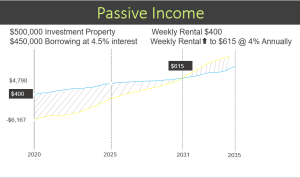The Benefits of Real Estate Crowdfunding opens up a world of opportunities for both seasoned investors and newcomers alike. This innovative approach to real estate investment allows individuals to pool their resources and invest in properties that might have seemed out of reach otherwise. By leveraging technology and a community-driven mindset, real estate crowdfunding not only democratizes investing but also enhances the potential for financial growth and diversification.
In this dynamic landscape, investors can access a variety of property types, from residential homes to commercial spaces, all while enjoying the benefits of lower entry costs and reduced risks. Moreover, platforms providing these crowdfunding opportunities often conduct thorough vetting processes, ensuring that the projects are not only viable but also promising returns. As more people become aware of these advantages, it’s clear that real estate crowdfunding is reshaping the traditional investment paradigm.
In today’s digital era, technology has become an integral part of our daily lives, transforming the way we communicate, work, and even play. The influence of technology is pervasive and multifaceted, shaping various sectors, including education, entertainment, healthcare, and more. This article aims to explore the profound impact technology has on our society, examining both the positive and negative aspects of this influence.One of the most significant advancements in technology has been the rise of the internet.
The world wide web has revolutionized the way we access information and connect with others. With just a few clicks, individuals can obtain vast amounts of knowledge, participate in online discussions, and engage with people from different cultures and backgrounds. This level of connectivity has fostered a sense of global community, breaking down geographical barriers and enabling the exchange of ideas on an unprecedented scale.Moreover, the internet has transformed the educational landscape.
E-learning platforms and online courses have made education more accessible than ever before. Students can learn at their own pace and from the comfort of their homes, making it easier for those with busy schedules, disabilities, or other challenges to pursue their academic goals. Additionally, technology has enriched traditional classroom learning by incorporating multimedia tools, interactive simulations, and virtual reality experiences that enhance student engagement and understanding.In the realm of healthcare, technology has made remarkable strides, improving patient care and outcomes.
Telemedicine has emerged as a vital service, allowing patients to consult with healthcare professionals remotely. This has been particularly beneficial during the COVID-19 pandemic, where social distancing measures limited in-person visits. Wearable health devices and mobile applications enable individuals to monitor their health in real time, allowing for early detection of potential issues and promoting proactive health management.Furthermore, technology has significantly impacted the business landscape.
The rise of e-commerce has changed the way consumers shop, providing convenience and a wider range of options. Businesses can reach a global audience through online platforms, expanding their market reach and driving sales. Digital marketing strategies, powered by data analytics, allow companies to tailor their outreach efforts to specific demographics, enhancing customer engagement and satisfaction.However, the rapid proliferation of technology also brings about several challenges.
One of the primary concerns is cybersecurity. As we increasingly store personal and financial information online, the risk of data breaches and cyberattacks has grown. Individuals and organizations must remain vigilant in protecting their digital assets, often investing in advanced security measures to safeguard sensitive data.Another significant issue is the digital divide, which refers to the gap between those who have access to technology and those who do not.
While urban areas may benefit from high-speed internet and the latest devices, rural communities often struggle with inadequate technology infrastructure. This disparity can lead to unequal opportunities in education, employment, and access to essential services, perpetuating socioeconomic inequalities.Moreover, the pervasive nature of technology can lead to negative social implications. With the rise of social media platforms, issues related to cyberbullying, misinformation, and privacy violations have become prevalent.
The constant connectivity can also contribute to feelings of isolation and anxiety, as individuals compare their lives to curated online personas and struggle to maintain a healthy work-life balance in a hyper-connected world.Despite these challenges, the potential of technology to drive positive change remains immense. Innovations in artificial intelligence and machine learning are poised to revolutionize various industries, enhancing efficiency and productivity.
For instance, AI-powered tools can analyze vast datasets to identify patterns and make predictions, helping businesses make informed decisions and optimize their operations.In addition, advancements in renewable energy technologies are crucial for addressing environmental challenges. Solar panels, wind turbines, and energy-efficient systems can significantly reduce our carbon footprint and promote sustainability. As society increasingly recognizes the importance of combating climate change, technology will play a pivotal role in developing solutions that protect our planet for future generations.The role of technology in the workplace has also undergone a transformation.
Remote work, once a rarity, has become commonplace, allowing employees to achieve a better work-life balance. Collaboration tools and project management software enable teams to communicate and collaborate effectively, regardless of their physical location. As companies adapt to this new normal, they are discovering that flexible work arrangements can lead to increased productivity and employee satisfaction.In conclusion, technology has undoubtedly transformed our society in numerous ways, presenting both opportunities and challenges.
While it has enhanced communication, education, healthcare, and business operations, it is essential to remain mindful of the issues that arise alongside these advancements. By addressing concerns such as cybersecurity, the digital divide, and the effects of constant connectivity, we can harness the power of technology to create a more equitable and sustainable future.As individuals, it is our responsibility to engage with technology thoughtfully and critically.
Embracing the positive aspects while being aware of the potential pitfalls will empower us to navigate the ever-evolving digital landscape effectively. Ultimately, technology should serve as a tool that enhances our lives, fosters connection, and drives progress, while ensuring that we remain grounded in our humanity.
FAQ Overview: The Benefits Of Real Estate Crowdfunding
What is real estate crowdfunding?
Real estate crowdfunding is a method of pooling funds from multiple investors to invest in real estate projects, allowing individuals to invest with smaller amounts of money.
How do I get started with real estate crowdfunding?
To get started, research different crowdfunding platforms, assess their offerings, and register to begin investing in chosen real estate projects.
What are the risks associated with real estate crowdfunding?
Risks include potential loss of capital, project failure, and market fluctuations, so it’s essential to conduct thorough research before investing.
Are there any fees involved in real estate crowdfunding?
Yes, most platforms charge fees such as management fees, which can vary from one platform to another. It’s important to review these before committing.
Can I invest in real estate crowdfunding with little money?

Absolutely! One of the key benefits is that many platforms allow investments starting from a few hundred dollars, making it accessible to a wider audience.






